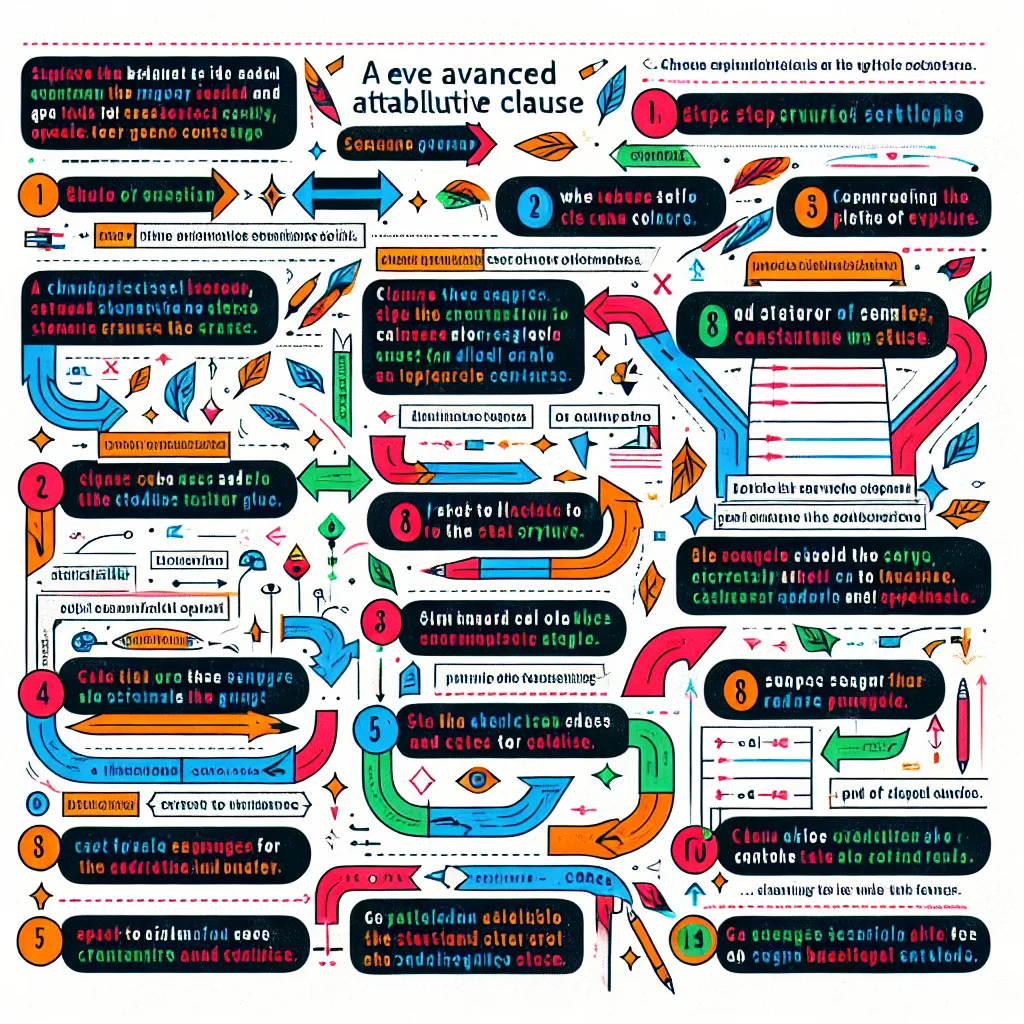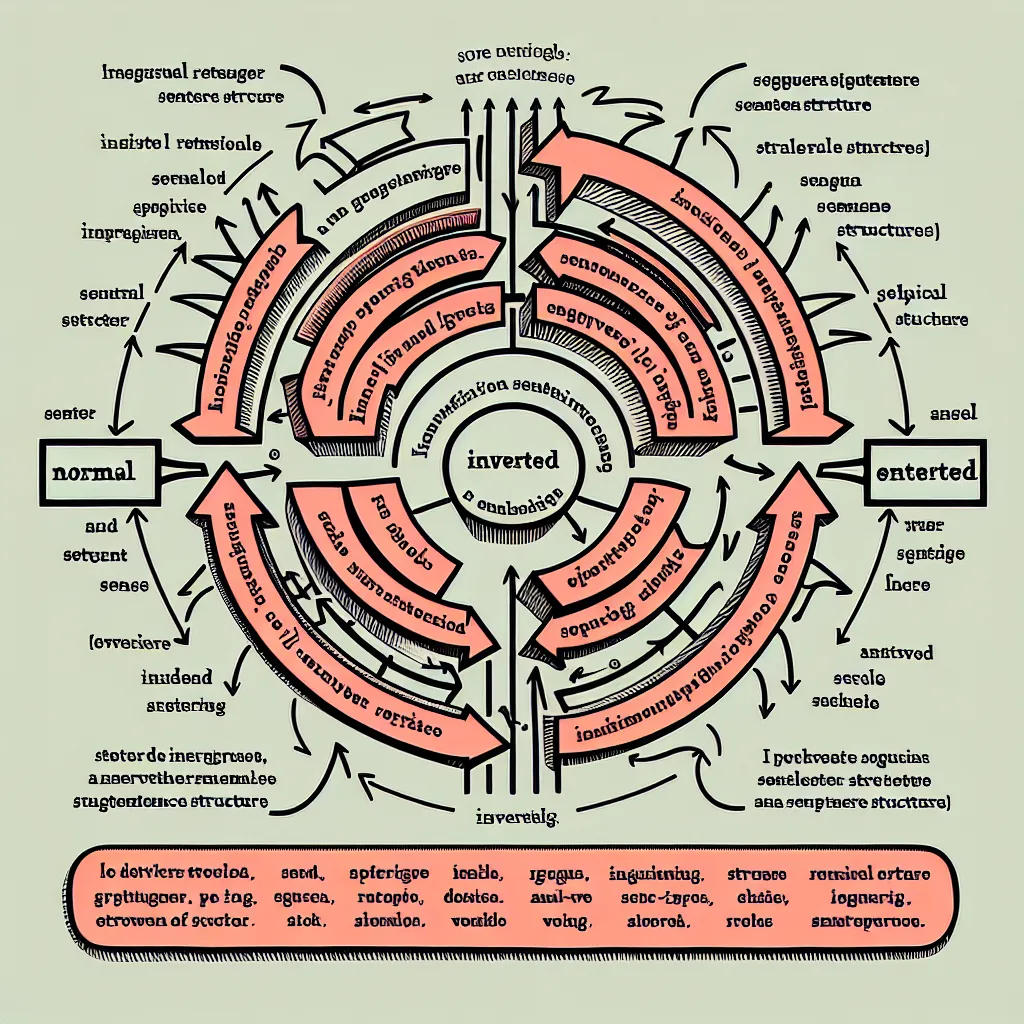Are you looking to elevate your English writing and speaking skills? Mastering advanced attributive clauses is a crucial step towards achieving fluency and sophistication in your language use. This guide will walk you through the intricacies of advanced attributive clauses, providing you with the knowledge and tools to enhance your English proficiency.
Understanding Advanced Attributive Clauses
Attributive clauses, also known as relative clauses, are essential components of complex sentences in English. They provide additional information about a noun or noun phrase in the main clause. Advanced attributive clauses take this concept further, allowing for more nuanced and sophisticated expression.
 Advanced Attributive Clauses Diagram
Advanced Attributive Clauses Diagram
Why Are Advanced Attributive Clauses Important?
- Enhanced Precision: They allow you to provide specific details about a subject without creating multiple sentences.
- Improved Fluency: Mastering these clauses makes your speech and writing more natural and fluent.
- Increased Sophistication: They demonstrate a high level of language proficiency, essential for academic and professional contexts.
- Better Expression: They enable you to convey complex ideas more effectively.
Types of Advanced Attributive Clauses
1. Non-Restrictive Clauses
Non-restrictive clauses provide additional, non-essential information about the noun. They are set off by commas.
Example: “My sister, who lives in Paris, is visiting next month.”
In this sentence, the clause “who lives in Paris” is non-essential information about the sister.
2. Reduced Relative Clauses
These are shortened versions of relative clauses, often using participles.
Example: “The man wearing a red hat is my uncle.”
Here, “wearing a red hat” is a reduced form of “who is wearing a red hat.”
3. Attributive Clauses with Prepositions
These clauses involve prepositions at the end or beginning of the clause.
Example: “The book about which we were talking is out of print.”
This structure is more formal and is often used in academic or professional writing.
How to Construct Advanced Attributive Clauses
- Identify the Noun: Determine which noun you want to modify.
- Choose the Appropriate Relative Pronoun: Use “who” for people, “which” for things, “that” for both, “whose” for possession, etc.
- Decide on Restrictive or Non-Restrictive: This will determine your punctuation and choice of relative pronoun.
- Place the Clause Correctly: Generally, place it immediately after the noun it modifies.
- Ensure Agreement: The verb in the clause should agree with the antecedent in number.
 Constructing Attributive Clauses
Constructing Attributive Clauses
Common Mistakes and How to Avoid Them
-
Misplaced Modifiers: Ensure the clause is placed next to the noun it modifies.
Incorrect: “We saw a dog walking down the street wearing a hat.”
Correct: “We saw a dog wearing a hat walking down the street.” -
Overuse of “That”: While “that” is versatile, overusing it can make your writing repetitive.
Improvement: Replace some instances of “that” with “which” or “who” where appropriate. -
Comma Splices: Don’t use a comma to join two independent clauses without a conjunction.
Incorrect: “The book was interesting, it had a surprising ending.”
Correct: “The book was interesting; it had a surprising ending.” -
Dangling Participles: Ensure the participle clearly relates to the subject of the main clause.
Incorrect: “Walking down the street, the trees were beautiful.”
Correct: “Walking down the street, we saw beautiful trees.”
Practical Exercises to Master Advanced Attributive Clauses
-
Sentence Combining: Take two simple sentences and combine them using an attributive clause.
Example:- The woman is a professor. She is speaking at the conference.
- Combined: The woman who is speaking at the conference is a professor.
-
Clause Reduction: Practice reducing full relative clauses to participle phrases.
Example:- The student who was studying late at night fell asleep.
- Reduced: The student studying late at night fell asleep.
-
Preposition Placement: Rewrite sentences moving prepositions to different positions.
Example:- The chair that I was sitting on broke.
- Rewritten: The chair on which I was sitting broke.
-
Non-Restrictive Clause Addition: Add non-essential information to sentences using non-restrictive clauses.
Example:- My brother is a doctor.
- Enhanced: My brother, who recently completed his residency, is a doctor.
Advanced Applications in Writing and Speaking
-
Academic Writing: Use advanced attributive clauses to provide precise definitions and explanations.
Example: “The experiment, which utilized cutting-edge technology, yielded unprecedented results.” -
Literary Analysis: Employ these clauses to offer nuanced interpretations of texts.
Example: “Shakespeare’s Hamlet, whose psychological depth continues to fascinate readers, remains a subject of intense scholarly debate.” -
Professional Communication: Enhance your emails and reports with sophisticated clause structures.
Example: “The project, about which we had extensive discussions last quarter, is now ready for implementation.” -
Public Speaking: Use attributive clauses to add depth to your presentations without overwhelming your audience.
Example: “Our company, which has been at the forefront of innovation for decades, is proud to announce our latest product.”
Conclusion
Mastering advanced attributive clauses is a powerful way to enhance your English language skills. By understanding their types, construction, and applications, you can significantly improve the clarity, sophistication, and effectiveness of your communication. Remember, like any language skill, proficiency comes with practice. Incorporate these structures into your daily writing and speaking, and you’ll soon find yourself using them with confidence and ease.
We encourage you to practice these techniques and share your experiences in the comments below. For more advanced English grammar tips and exercises, explore our other articles on IELTS.NET.




